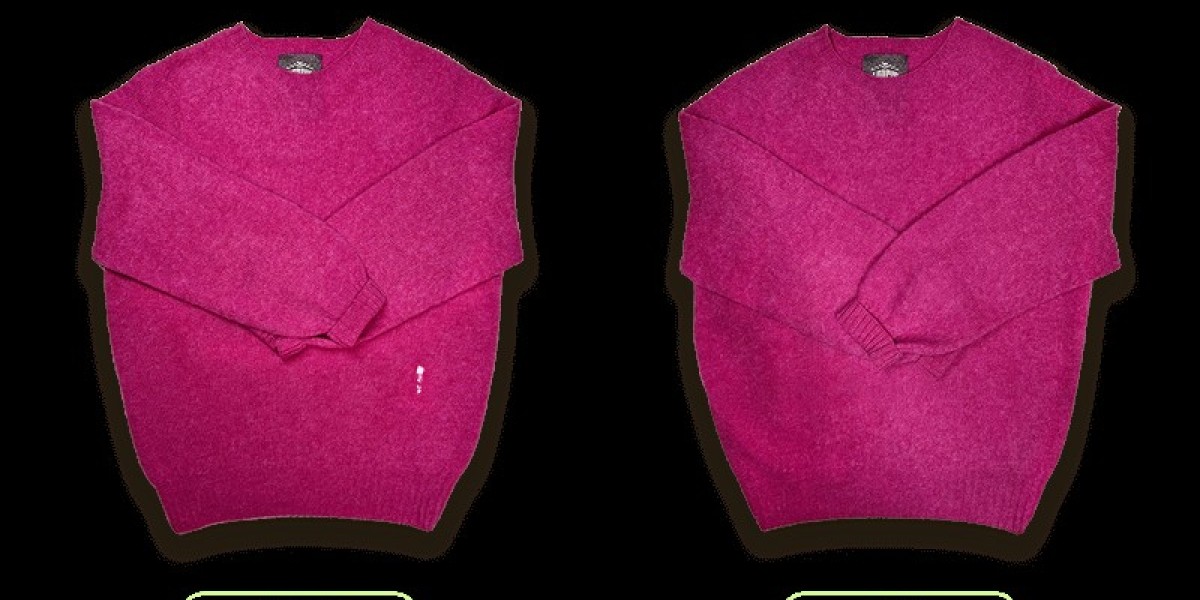Moth holes in clothes are one of the most frustrating issues for anyone who loves quality fabrics, especially natural fibers like wool, silk, or cashmere. These tiny but destructive pests can wreak havoc on your wardrobe, creating unsightly holes that can seem impossible to fix. However, with the right knowledge, you can prevent moth damage, identify the signs of an infestation, and even repair moth holes to restore your garments.
In this guide, we’ll walk through the essential steps to prevent moth holes, ways to identify damage early, and methods for repairing and protecting your clothes from further harm.
What Causes Moth Holes in Clothes?
Contrary to popular belief, it’s not the adult moths that create holes in clothes; it’s their larvae. Clothing moths, particularly the common clothes moth (Tineola bisselliella) and the case-bearing clothes moth (Tinea pellionella), lay their eggs on fabrics, especially those rich in natural fibers like wool, silk, and cashmere. The larvae that hatch from these eggs are the ones that consume the fabric to grow and develop.
These larvae are particularly attracted to fabrics that contain sweat, body oils, or food stains. This means that even if your clothes are stored in your closet, they are not necessarily safe unless they are properly cleaned and protected.
How to Identify Moth Holes and Signs of an Infestation
To effectively combat moth damage, it’s crucial to spot the early signs of an infestation. Here are some key indicators:
Tiny Holes in Clothing: The most obvious sign of moth damage is small holes in your clothing, typically irregularly shaped and often found in less visible places such as underarms, collars, and seams.
Silk Webbing or Cocoons: Moth larvae spin webs and cocoons, similar to tiny silken tunnels. These are often found in the folds or seams of clothing and are a clear indication that larvae are present.
Shed Larvae Skins: As moth larvae grow, they shed their skins. You might find these tiny, translucent skins near the affected clothing.
Adult Moths: While adult moths don’t eat fabric, their presence is a red flag that there could be larvae nearby. Clothes moths are small, beige, or light brown, and typically avoid light, preferring dark, undisturbed areas like closets.
Clumped Fabric Fibers: In some cases, before creating visible holes, the larvae will start chewing fibers, leaving behind clumps or thinning areas on the fabric. This is often seen in woolen items.
How to Prevent Moth Holes in Clothes
Prevention is the best defense against moth holes. Here’s how to safeguard your clothing from moth damage:
Clean Your Clothes Regularly: Moth larvae are drawn to clothing that contains natural fibers and is soiled with sweat, skin oils, or food stains. Make it a habit to clean your clothes, especially before storing them for long periods. Dry cleaning or washing according to fabric care instructions will remove any substances that attract moths.
Store Clothes Properly: Moths thrive in dark, undisturbed places. When storing out-of-season clothes, ensure they are clean and kept in airtight containers. Vacuum-sealed bags, plastic bins with tight lids, or garment bags are ideal for long-term storage. Cedar-lined drawers or cedar blocks can also be placed in closets or storage spaces to naturally repel moths.
Use Moth Repellents: Natural moth repellents such as cedar wood, lavender, rosemary, and cloves are excellent for keeping moths at bay. You can use cedar chips or sachets of dried herbs in your closets and drawers. While these methods help deter moths, they are not foolproof, so they should be used in combination with proper cleaning and storage.
Regularly Vacuum and Clean Closets: Clothes moths prefer undisturbed areas, so make sure to vacuum your closets, drawers, and other storage spaces regularly. Pay special attention to the corners, baseboards, and areas under furniture. Cleaning these areas frequently will remove larvae and eggs before they have a chance to hatch.
Freeze Infested Clothing: If you suspect an infestation, freezing your clothes can kill moth eggs and larvae. Place the affected items in a plastic bag and freeze them for 72 hours. Once thawed, wash or dry clean the garments to remove any remnants.
How to Repair Moth Holes in Clothes
Discovering moth holes in your favorite garments can be disheartening, but repairing them is possible with the right techniques. Below are some methods for fixing moth holes, depending on the size and severity of the damage:
Small Holes
For small, pin-sized moth holes, repairs can be almost invisible with careful stitching. Here’s how to fix small moth holes:
Thread Matching: Select a thread that matches the color and texture of the fabric as closely as possible. If you're working with wool, you may need a wool thread or fine yarn.
Stitch the Hole: Turn the garment inside out. Using a fine needle, gently stitch the edges of the hole together. The goal is to weave the hole closed, not to pull the fabric too tight, which can cause puckering.
Tie Off and Finish: After closing the hole, tie off the thread securely on the inside of the garment. Trim any excess thread, and smooth out the repair.
Medium-Sized Holes
For larger holes, patching may be necessary. Here's a step-by-step guide:
Reinforce with Matching Fabric: If you have spare fabric from the same garment or a similar material, use it to patch the hole. Cut a small patch, slightly larger than the hole.
Position the Patch: Turn the garment inside out and place the patch over the hole. Using a fine needle and matching thread, stitch around the patch’s edges, securing it to the fabric.
Invisible Stitching: For an invisible finish, use a ladder stitch or similar method that hides the thread inside the fabric.
Professional Repair Options
For irreplaceable or high-value garments, professional repair services such as reweaving or darning may be the best option. Reweaving is an intricate technique used to restore fabrics like wool, cashmere, and silk by reconstructing the weave around the hole. This service is often used for valuable vintage pieces or high-end garments that require a near-perfect restoration.
Additional Tips to Prevent Future Moth Damage
Even after repairing your clothes, it’s essential to take steps to prevent future moth infestations:
- Rotate Your Wardrobe: Regularly wear and move items in your closet to discourage moths from settling in one place for too long.
- Use Moth Traps: Sticky pheromone traps specifically designed for clothes moths can be placed in closets or storage areas. These traps attract and capture adult moths, helping to reduce the population.
- Inspect and Air Out Clothes: Regularly inspect stored garments for signs of damage or larvae. Airing out your clothes and shaking them out every few months can dislodge larvae or eggs before they cause damage.
Conclusion
Moth holes in clothes can be frustrating, but they don’t have to mean the end of your cherished garments. With the right preventive measures, you can protect your clothes from moth infestations. And if moths do manage to cause damage, learning how to identify the signs early and repair holes using simple techniques will help you extend the life of your wardrobe. Whether you choose to tackle repairs at home or seek professional assistance, keeping your clothing in top shape is well within reach.







